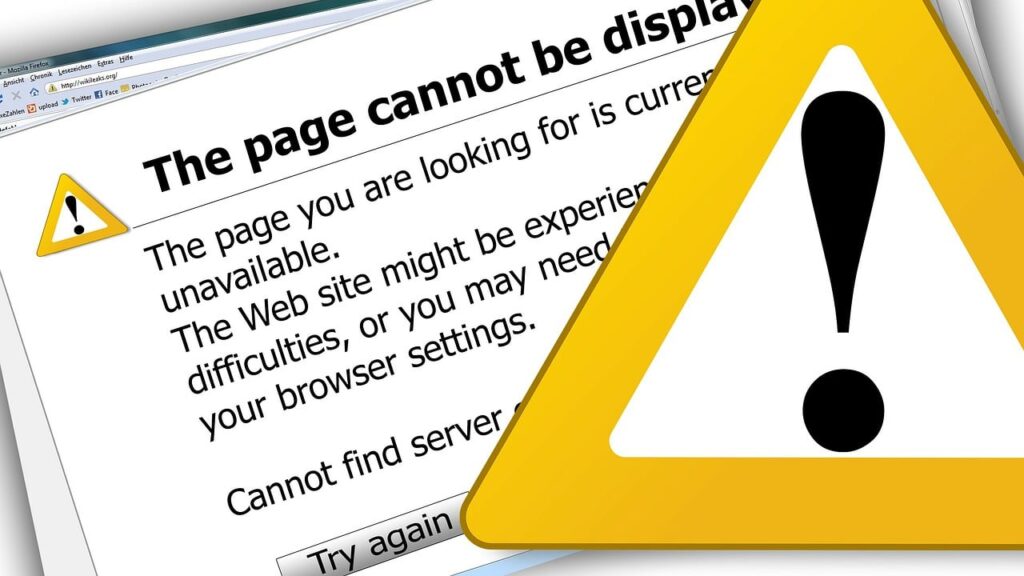
Looking to boost your site’s popularity and SERP ranking? IT experts recommend changing servers every 3 to 5 years. Website migration will lead to enhanced user satisfaction, and more traffic will be on its way to your landing page. However, the web migration journey is fraught with different challenges that may undermine these benefits.
Maybe you’re looking for modernized designs, better layout, improved speed, or mobile optimization. However, these common pitfalls may render your website transition efforts meaningless. Instead, you should take some proactive steps to counter these issues.
This blog will discuss 10 key tips to navigate the complications that arise when you’re migrating your site to a different hosting service provider. Recognize these pitfalls and avoid them no matter what.
10 Web Migration Mistakes to Avoid
In 2019, a major company switched servers and put its website under a major overhaul. Moving their website to another platform turned out to be a disaster, however. A poorly executed web migration plan ended by hurting their traffic, and restoration caused further delay in the final launch.
Data reveals that websites stand at a risk of losing 80% of their traffic during migration. Recovering your pre-migration SEO can take 3 to 6 months (or even years in some cases).
However, you can avoid these problems by better understanding them. Familiarize yourself with the key issues businesses face when replacing servers. Consider Mayfair’s example, which moved all of its cloud-based apps to Google Cloud without observing any major decline in performance.
Here is a detailed breakdown of the 10 major challenges to be expected during site migration:
1. Lack of Planning
The first mistake website owners make is a lack of planning. Rushing into web migration without a proper strategy in place can have disastrous consequences. Key SEO elements may get lost, so search engines will start treating your site as a new entity. Broken links ruin the user experience, and the site starts facing major performance issues. However, you can avoid the first pitfall in web migration with these tips:

- Craft a comprehensive risk mitigation plan to streamline the migration process.
- Audit your website before migration so you can measure its performance post-migration.
- Create backups of your old site with all pages, images, metadata sets, and content pieces.
- Make a detailed checklist of the critical components that must be addressed when moving the site to another server.
2. Ignoring SEO Best Practices
The second mistake is to ignore SEO best practices when switching servers. Remember, you’re doing this migration to boost your SERP rankings and make your site more visible to users. Make sure that the site has a good SEO score after the migration process is done. If the score drops because of any unaddressed problem, your web migration efforts will be in vain. That’s why you should regularly conduct SEO audits to identify and rectify common SEO issues. Consider these best practices in mind:

- Give every page a unique, relevant meta title and meta description after migration.
- Set up 301 redirects for the URLs that were modified during the migration process.
- Enhance the crawlability of your website by checking your robots.txt file and sitemap.
- Get an SSL certificate to switch from HTTP to HTTPS if you haven’t done that already
- Remove duplicate content from your site and upload unique, valuable content for SERPs
3. Redirecting All Pages to the Homepage
Since we’re talking about SEO best practices and 301 redirects, these redirects are important because a search engine will use them to find the most relevant content on your site. Don’t redirect all pages to an irrelevant homepage. For instance, if you are a clothing brand migrating to a different host, don’t make a page about “winter apparel” redirect the user to the homepage; instead, it should redirect the user to the new page about winter apparel. You should avoid this pitfall with these recommendations:

- Always start by coming up with a “redirect map” that outlines old URLs with their corresponding new versions.
- Keep testing redirects on your website to make sure that they are working correctly and sending users to the new page.
- Monitor the web traffic post-migration with Google Analytics to see unusual spikes in your site’s bounce rates.
- Don’t forget to ensure that the internal links on your site should also point toward the new URLs after the migration process is done.
4. Failing to Test in a Staging Environment
What happens when you fail to test your new site in a safe staging environment? Here’s how the lack of safe testing makes your web migration plans unsuccessful:
- You won’t detect any bugs or errors present in the code. When the site goes live, customers are the ones who have to navigate a badly-programmed website.
- You can’t see how this site performs in the real world; problems like slow load times and server crashes ruin the user experience, causing a dip in your site’s organic traffic.
- The data integrity can get significantly compromised when you let an eCommerce website go live without testing it first, e.g., corrupt user data and security issues.

You can avoid these problems by setting up a dedicated staging environment when migrating your site to a different hosting service provider. There, you can perform different tests, such as smoke testing and UAT (user acceptance testing).
5. Allowing the Staging Site to be Indexed
However, don’t let your staging site be indexed by search engine crawlers. Even if you stop these bots & crawlers after they’ve started the indexing process, it will already be too late! Staging site indexing will lead to your confidential business data being leaked by these bots and in-progress features, making web crawlers think your site isn’t user-friendly. Also, broken links end up causing 404 errors. Moreover:
- Search engines allocate a crawl budget to each site, so indexing a staging site can make crawlers slowly index your actual site, i.e., the production site.
- Search engines may be confused by the staging & production sites, assuming that you duplicate your content.
- If any external links point toward a page on the staging site, you’ll lose the link equity and watch a sharp decline in your site’s DA.

You should stop bots from indexing your staging site during the migration process by using robots.txt file sets. These files tell the search engines not to crawl the staging site by using the instruction “disallow.” A different idea is to use “noindedx, nofollow” meta tags at the head section of all pages on your staging site. Some IT experts recommend password-protecting the staging site so only whitelisted IP addresses can access it while it’s being switched to another server.
6. Not Backing Up Data
As stated before, you should always create backups of your old website before the migration process is started. Here’s how it’s done:
- Use reliable data migration tools with data integrity checks and error reporting.
- Do a test migration by using a smaller data subset; this pilot migration helps you identify major issues with your data for a full-scale migration.
- After migration, keep checking your site to ensure that data has been transferred accurately; you may compare the migrated data with the backup to verify completeness.

7. Overlooking Broken Links and Missing Content
Don’t disregard the presence of broken links and missing content pieces on your after during migration. Nothing makes users more frustrated than encountering 404 errors on your website. They’ll lose trust in your credibility, so your site’s conversion rate will decline. You can remedy this situation by:
- Updating URLs by using search-and-replace tools in your CMS
- Remove dead links or replace them with similar links or relevant content
- Keep on the lookout for broken links by doing quarterly audits; keep your site’s SEO performance in check this way
- Most importantly, come up with customized 404 pages instead of the generic ones.
8. Making Too Many Changes at Once
What happens when you try to juggle too many changes & updates at the same time? Introducing many changes at once will complicate the migration progress; it’ll make it difficult to identify where a certain issue is arising from! Also, more changes lead to a longer downtime and overwhelmed user base. That is why you should follow these recommendations when the migration process requires too many changes:

- Evaluate how complex this process will be and always prioritize low-complex changes.
- It’s a lot smarter to introduce changes/upgrades in waves for gradual adjustments and easier troubleshooting.
- Assess how risky each potential change is, then prioritize the ones that offer the least risk but the most benefits.
- Use migration planning tools that will help you decide which changes go first
- Lastly, keep your stakeholders aware of these changes; this collaboration helps prioritize changes that align with business needs and user expectations.
9. Poor Communication with Stakeholders
Don’t forget about keeping your stakeholders in the loop. Web migration needs an all-hands-on-the-deck approach to stay successful. Communication silos make it difficult to implement most of the steps we’ve outlined above. So, here’s what you can do to communicate everything to stakeholders (a term we use for employees, suppliers, investors, customers, etc.):
- Decide exactly what info has to be communicated, how often, and through which channels.
- Keep your stakeholders updated with the progress of the migration process and bring any major challenges to their attention posthaste.
- Customize IT updates based on your stakeholders’ specific interests to increase engagement (we are talking about cutting down on jargon and making this info easily comprehensible).

10. Failing to Monitor Post-Migration Performance
Some website owners fail to keep an eye on their site’s progress after the migration part is done. That is not good practice, and you should keep tracking key metrics to see how your website is performing now. You can track metrics like:
- Error rates
- Response time
- Page load times
- Network traffic
- Cost per transaction
- User engagement rate
- CPU and memory utilization
How will you do that? You can also use some online tools to monitor the progress of your post-migration site. Here are some tools recommended by IT experts:
- Datadog: This platform gives comprehensive monitoring capabilities for cloud-based systems as well as real-time visibility into application performance and user experience. It has service maps for visualizing data flows, long-term performance metrics retention, and dashboards for tracking key performance indicators (KPIs) after migration.
- Dynatrace: Known for its deep insights into app performance, Dynatrace helps brands optimize their cloud migration journey. It gives performance data for both pre-and post-migration stages, ensuring that sites meet performance benchmarks and identifying areas for improvement.

- AppDynamics: This tool specializes in real-time performance monitoring and analytics, allowing organizations to track application performance and user experience metrics. It offers features like flow maps for dependency mapping and AI-driven root cause analysis to quickly identify and resolve issues.
Conclusion
Rest assured, website migration helps you see a visible boost in organic traffic with a better SEO score. It does wonders for your website’s search visibility, far outweighing the risks when approached with care & expertise. So, familiarize yourself with the common risks associated with website migration. You must partner with migration experts who have ample experience dealing with these pitfalls.
If you are still confused, feel free to get in touch with the pros at QuickMigrate, who have years of experience helping site owners switch hosts smoothly. Contact website migration experts with their web dev skills to boost your site’s visibility and elevate it to new heights in SERP ranking.